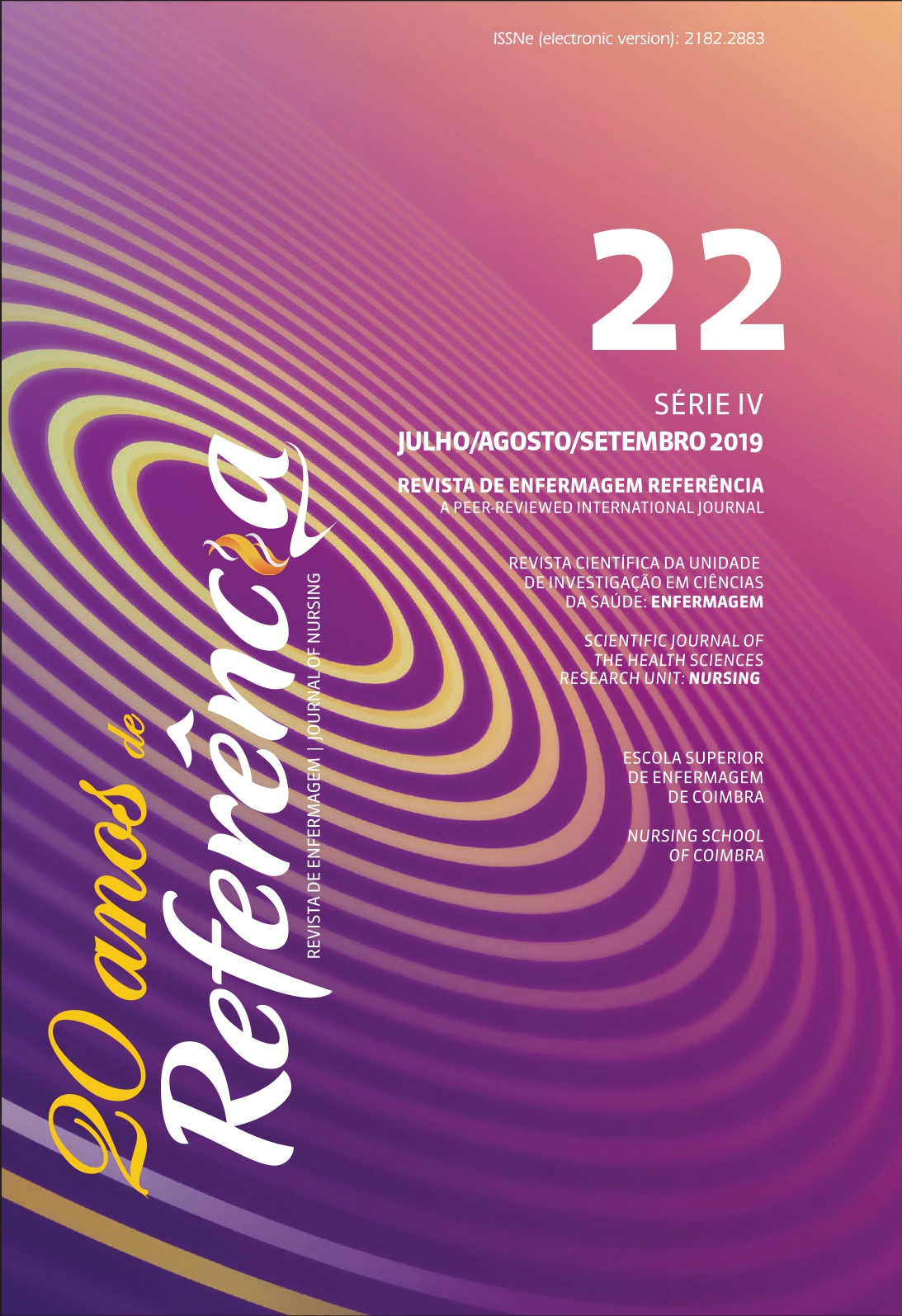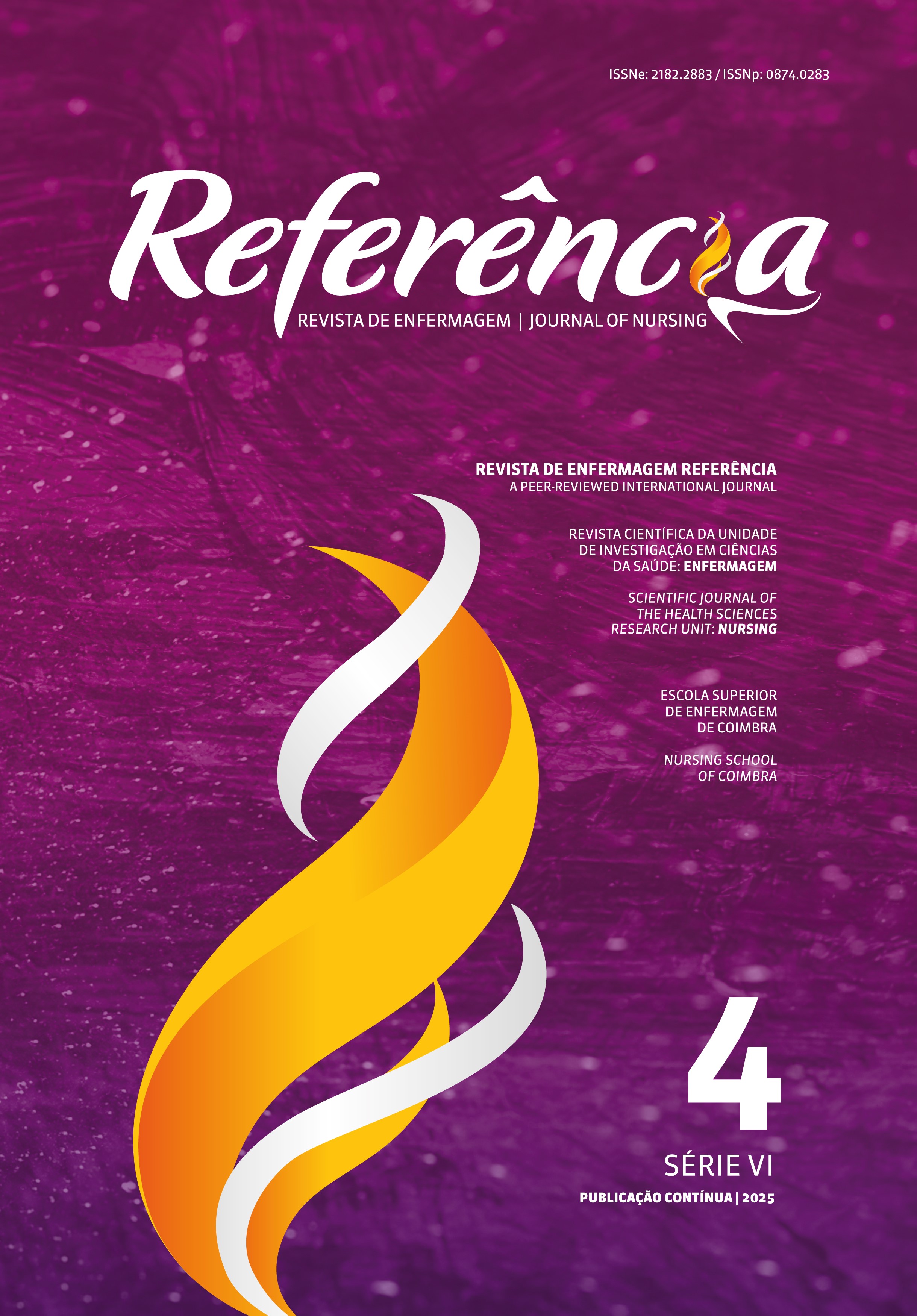The critically ill person submitted to non-invasive ventilation in an emergency department
DOI:
https://doi.org/10.12707/RIV19027Keywords:
complications, person in critical situation, noninvasive ventilationAbstract
Background: The effectiveness of non-invasive ventilation (NIV) may be impacted by potential complications that require preventive nursing attention.
Objective: To identify the complications of critically ill patients undergoing NIV therapy admitted to the Emergency Department of ULS-Bragança.
Methodology: Exploratory-descriptive, observational, quantitative study conducted through the application of two data collection instruments, between November 2017 and March 2018: A Questionnaire and an Observation Grid of a sample of 35 patients, mostly female (57.14%) over the age of 85 (37.14%).
Results: The most frequent clinical diagnosis was respiratory failure (45.71%). The most frequent complications were the sensation of claustrophobia, ulcerations of the face, pain, and accumulation of secretions. Less frequent complications were nasal congestion, conjunctivitis, gastric distension, aerophagia, and vomiting.
Conclusion: The dissemination of the results is advocated, in order to open the discussion within and between teams, to reinforce the relevance of nursing training regarding the care of patients with NIV.
Downloads
References
Asseiro, C., & Beirão, M. T. (2012). Noninvasive ventilation in emergency departement, care for adjustment and maintenance and health gains. Journal of Aging & Inovation, 1(4), 3-13. Recuperadode http://www.journalofagingandinnovation.org/wp-content/uploads/1-Ventila%C3%A7%C3%A3o-n%C3%A3o-Invasiva.pdf
Bezerra, V. S., Sousa, A. J., Silva, I. P., Lima, A. P., Porto, F. M., & Vieira, F. R. (2019). O uso da ventilação não invasiva em pacientes com DPOC: Revisão sistemática. Recuperado de https://even3.blob.core.windows.net/anais/86718.pdf
Cruz, M. R., & Zamora, V. E. (2013). Noninvasive mechanical ventilation. Revista HUPE,12(3), 92-101. doi:10.12957/rhupe.2013.7535
Esquinas, A. M. (2011). Princípios da ventilação mecânica não invasiva: Do hospital ao domicílio. Murcia, Espanha: GasinMédica.
Ferreira, S., Nogueira, C., Conde, S., & Taveira, N. (2009). Ventilação não invasiva: Artigo de revisão. Revista Portuguesa de Pneumologia, 15(4), 655-667. Recuperado de http://www.scielo.mec.pt/pdf/pne/v15n4/v15n4a06.pdf
Freo, M. C., Bahammam, A. S., Dellweg, D., Guarracino, F., Cosentini, R., Feltracco, P., Vianello, A., Ori, C., & Esquinas, A. (2013). Complications of non-invasive ventilation techniques: A comprehensive qualitative review of randomized trials. British Jornal of Anesthesia, 110(6), 896-914. doi:10.1093/bja/aet070
Gay, P. C. (2009). Complications of noninvasive ventilation in acute care. Respiratory Care, 54(2), 246–257. Recuperado de http://www.rcjournal.com/contents/02.09/02.09.0246.pdf
Mehta, S., & Hill, N. S. (2001). Noninvasive ventilation. American Jornal of Respirory and Critical Care Medicine, 163(2), 540–577. doi:10.1164/ajrccm.163.2.9906116
Ordem dos Enfermeiros. (2010). Regulamento das competências específicas do enfermeiro especialista em enfermagem em pessoa em situação crítica. Recuperado de https://www.aesop-enfermeiros.org/up/ficheiros-bin2_ficheiro_pt_0010687001435324633-155.pdf
Pinto, P. S. (2013). Ventilação não invasiva: Uma prática fundamentada em evidência científica. Revista Nursing, 25(288), 9-13.
Regulamento nº 124/11 de 18 de Fevereiro. (2011). Diário da República nº 35/11- II Série. Ordem dos Enfermeiros. Lisboa, Portugal.
Rodrigues, P. A. (2017). Determinantes da competência emocional de profissionais de saúde na abordagem ao doente critico (Trabalho de projeto). Instituto Politécnico de Bragança, Escola Superior de Saúde de Bragança, Portugal. Recuperado de https://bibliotecadigital.ipb.pt/bitstream/10198/14784/1/Pedro%20Alexandre%20da%20Rosa%20Rodrigues.pdf
Ruzic, A. (2019). Contemporary ventilatory strategies for surgical patients. Seminars in Pediatric Surgery, 28(1), 18-25. doi:10.1053/j.sempedsurg.2019.01.004
Simonds, A. K., & Hare, A. (2013). New modalities for non-invasive ventilation. Clinical Medicine: Journal of the Royal College of Physicians of London,13(sup.6), s41-s45. doi:10.7861/clinmedicine.13-6-s41
Sociedade Portuguesa de Cuidados Intensivos. (2008). Transporte de doentes críticos: Recomendações. Recupe rado de https://spci.pt/files/2016/03/9764_miolo1.pdf
Ximendes, D. P., & Silva, F. M. (2015). Os benefícios e complicações da ventilação não invasiva (VNI) em pacientes com DPOC: Uma revisão bibliográfica. Recuperado de https://pt.scribd.com/document/370749066/Os-Benefcios-e-Complicaes-Da-Ventilao-No-Invasiva-Vni-Em-Pacientes-Com-Dpoc-Uma-Reviso-Bibliogrfica






















